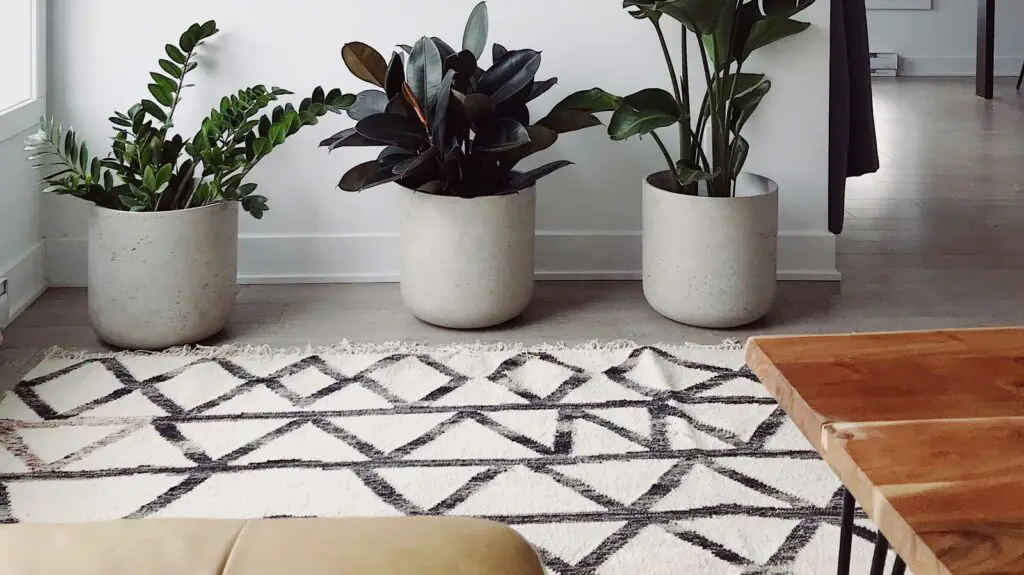Are you doing a remodeling project or replacing your floors and struggling to understand the differences between shoe molding and quarter round?
New flooring means new trim in many instances, so it makes sense to be thinking about this stuff.
Don’t worry, many home improvement DIYers have the same problem.
While at first glance they may appear to have very subtle differences, there are distinct differences. Shoe molding and quarter round both have unique shapes, sizes, applications, and benefits that create specific roles in home improvement projects. It can be difficult to decide which one is right for your job.
When should you use shoe molding?
When should you use quarter round?
Do you have to use shoe molding with hardwood floors?
What nails should you use to fasten your molding?
How should you paint it?
If you don’t know the differences between shoe molding and quarter round, keep reading! In this article, I’ll explain each one in detail and tell you which will best fit your home improvement project.
By the way – before we get too far along here, if you want to connect with other homeowners and builders and get more great ideas for your home to make your space the best join my free private Facebook group, Remodel Reality here.
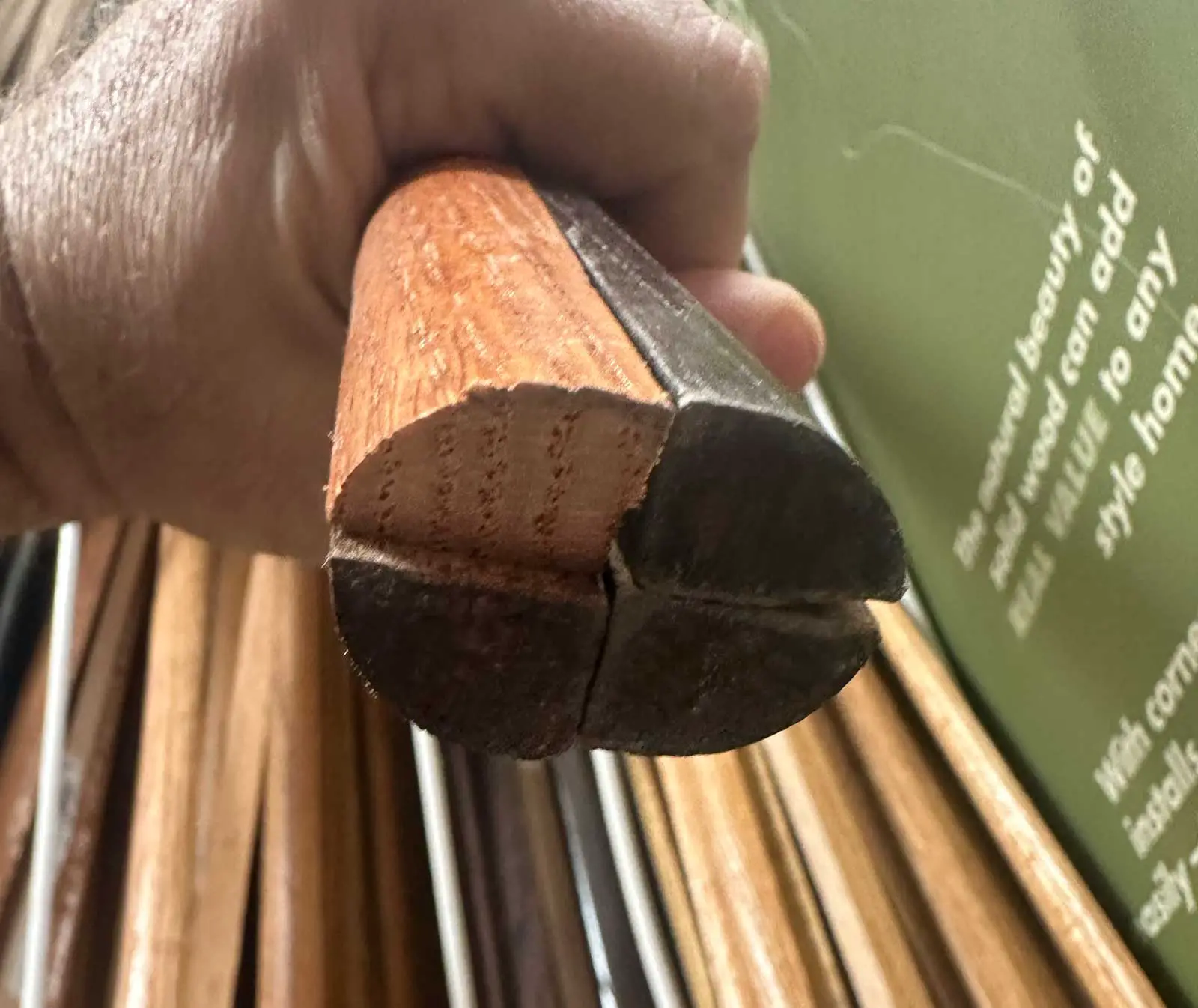
What Are The Differences Between Shoe Molding and Quarter Round?
Shoe molding and quarter round are two types of moldings that serve as finishing touches to cover gaps between your walls, baseboards, and floors. These small gaps may seem insignificant, but they can make a big difference in the overall look of a room.
Moldings have been used for centuries to add elegance and sophistication to homes. Shoe molding and quarter round are no exceptions; they are often used for decorative purposes and to give a polished look to a room.
Quarter round is called so because of its unique design that features a curved, perfect quarter-circle appearance. The curve of this type of molding makes it easier to install than shoe molding since it can easily follow the contours of the wall and floor. This type of molding is often used in traditional or Victorian-style homes.
On the other hand, shoe molding has slightly sharper edges than quarter-round and looks more like a triangle than a circle. This type of molding is ideal for modern or contemporary spaces due to its sleeker appearance.
Both types of moldings come in different sizes and materials such as wood, vinyl, or rubber depending on your preference. It’s important to choose the right size and material that will complement your interior design.
Here’s a quick comparison of the main differences between shoe molding and quarter round trim:
| Feature | Shoe Molding | Quarter Round |
|---|---|---|
| Shape | Slightly triangular, with sharper edges | Perfect quarter-circle appearance |
| Size | Slightly smaller and thinner than quarter round | Thicker and taller than most shoe moldings |
| Angles | 90-degree angle on the backside | 90-degree angle on the backside |
| Smaller angle on the showing side | Perfect quarter radius on the showing side | |
| Uses | Covers small gaps without sacrificing aesthetics | Better for patchwork, covers significant gaps between the walls and floor |
| Adds visual appeal to baseboards and walls | Less commonly used for visual flair | |
| Ideal for contemporary home aesthetics | Complements tall walls with wide baseboards | |
| Ideal for transitions in doorways and staircases | Ideal for rooms with hardwood floors | |
| Materials | Built in wood, medium-density fiberboard, polystyrene, PVC, etc. | Built in the same materials as shoe molding |
| Painting | Can be painted to match the interior design | Can be painted to match the interior design |
| Nailing | Nail gun is commonly used | Nail gun is commonly used |
| Uses 18-gauge or 16-gauge finish nails | Uses 18-gauge brad nails | |
| Needs extra nails to keep it in place | Can be installed with fewer nails | |
| Cost | Slightly more expensive than quarter round | Slightly less expensive than shoe molding |
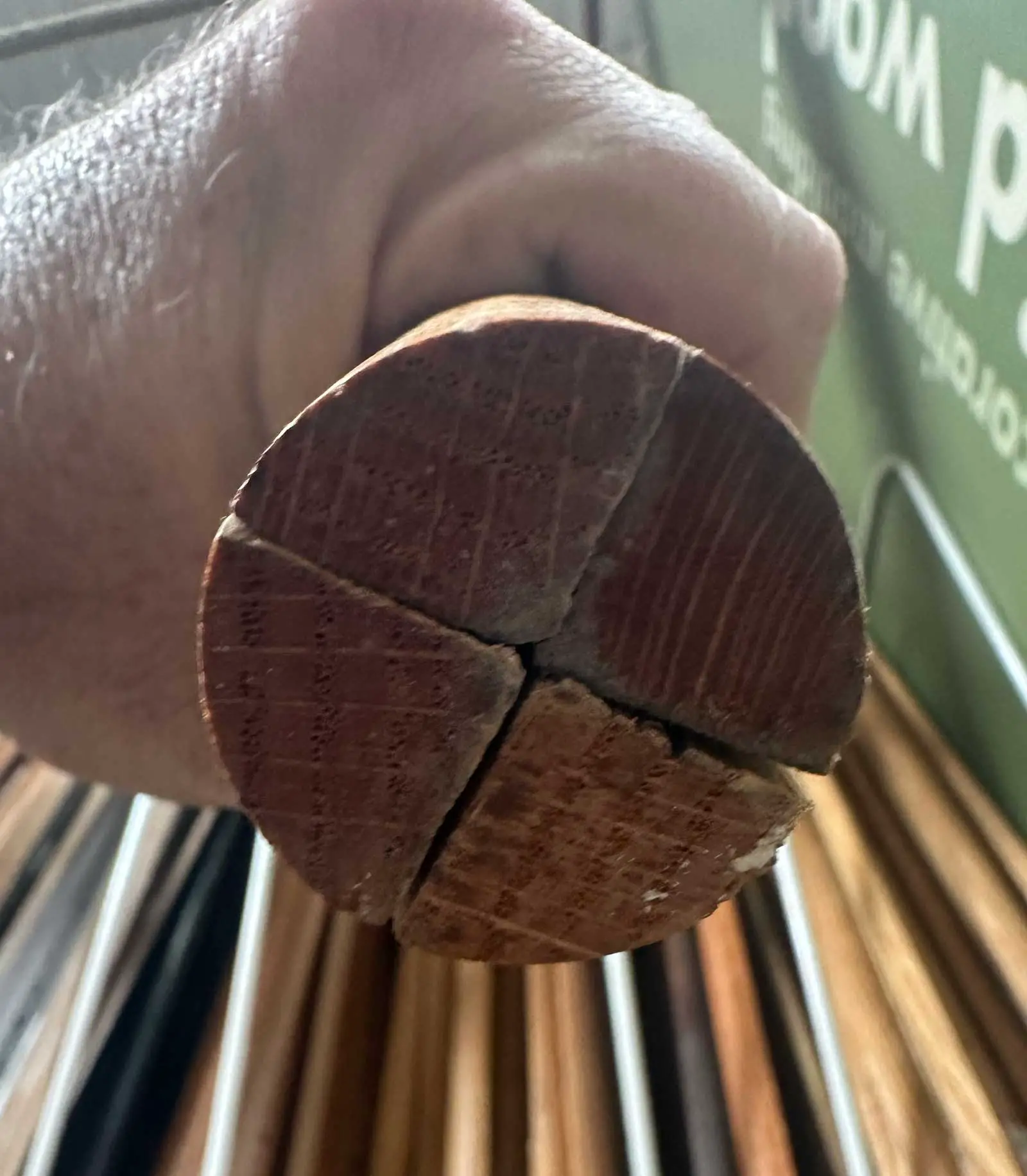
Brief History of Shoe Molding and Quarter Round
Moldings have been used in architecture for thousands of years, with evidence of their use dating back to the Greek and Roman Empires. These early moldings were simple and functional, used to protect buildings from water damage and wear and tear.
Over time, however, the use of moldings became more elaborate and decorative. New designs were developed to suit different styles of architecture, from Gothic cathedrals to Renaissance palaces. The use of moldings became a way for architects and builders to showcase their creativity and skill.
Shoe molding and quarter round are two types of moldings that have been commonly used in homes for many years. Their design has evolved over time to fit different interior designs. Quarter round earned its name because of its unique curved, perfect quarter-circle appearance. This design makes it easier to install than shoe molding since it can easily follow the contours of the wall and floor.
In contrast, shoe molding has slightly sharper edges than quarter-round and looks more like a triangle than a circle. This type of molding is ideal for modern or contemporary spaces due to its sleeker appearance.
Both types of moldings come in different sizes and materials such as wood, vinyl, or rubber depending on your preference. It’s important to choose the right size and material that will complement your interior design.
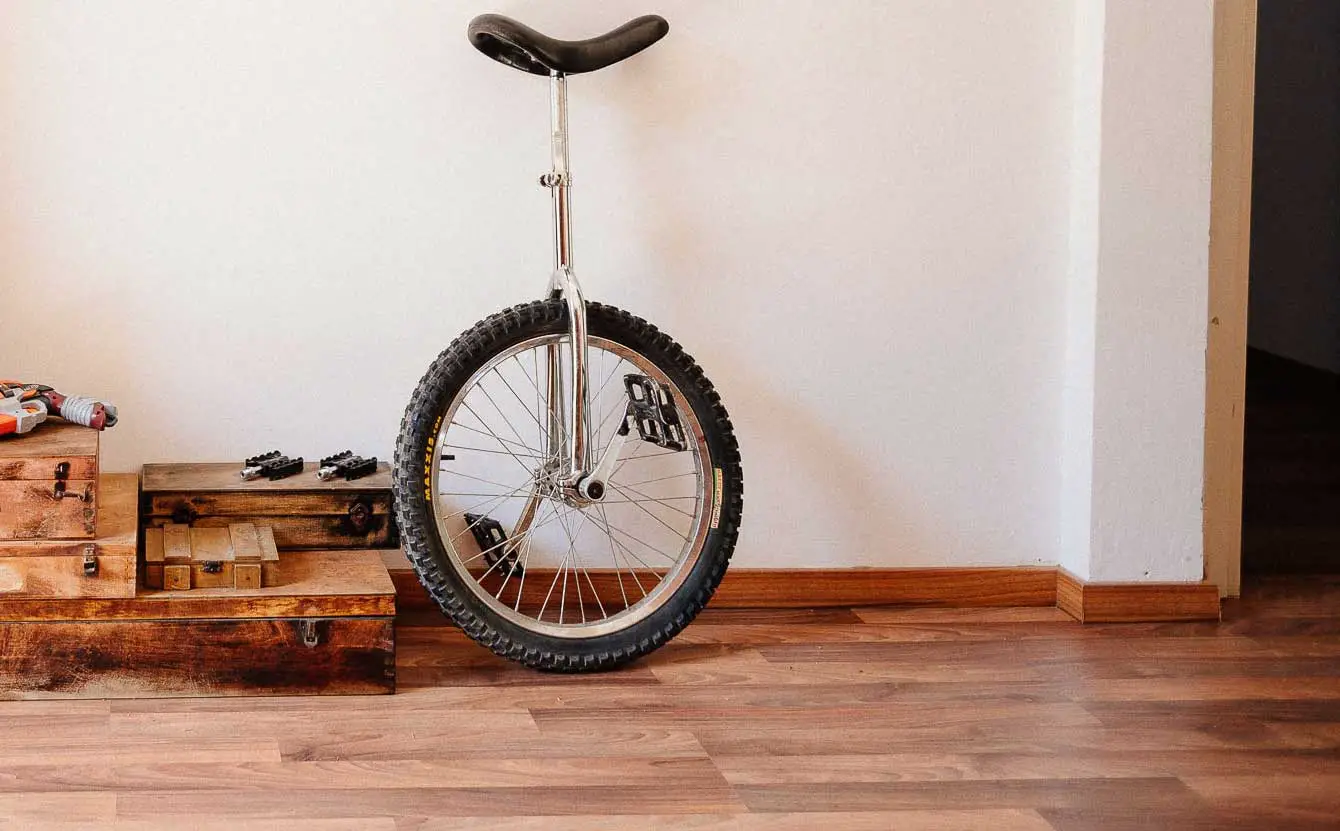 Differences between Shoe Molding and Quarter Round
Differences between Shoe Molding and Quarter Round
While both serve a similar function in covering gaps between walls, baseboards, and floors, they have some notable differences that set them apart.
One of the main differences is their shape. Quarter round has a curved, quarter-circle appearance which gives it a softer look. In contrast, shoe molding has sharper edges than quarter-round and looks more like a triangle than a circle. This makes it ideal for modern or contemporary spaces due to its sleeker appearance.
Another difference between these two moldings is their size. Shoe molding is often smaller and thinner than quarter round. This gives it a more minimalist feel while still providing a clean finished look to the room.
The materials used to make these moldings also differ, with both coming in various materials such as wood, medium density fiberboard (MDF), polystyrene, and PVC. The type of material you choose will depend on your preference and budget.
Additionally, shoe molding is often used along the intersection of the baseboard and floor to allow more latitude in end cuts and to hide un-level floors. It can also be used as an accent piece to add depth or detail to a room’s design.
In contrast, quarter round is often used to fill corners or soften any 90° joint between trim and moldings. Its thicker and taller profile makes it an excellent choice for covering significant gaps between the walls and the floor.
Shoe Molding vs. Quarter Round: The Basics
Both shoe molding and quarter round serve the same purpose of covering gaps between the walls and floors, but they differ in size, shape, angles, materials, and nailing techniques. Understanding these basic differences will help you choose the best option for your interior design needs.
Size and Shape
When it comes to size and shape, both of these moldings are similar. They serve the same purpose of covering gaps between walls and floors, and they both have a 90-degree angle on the backside that allows them to sit flush against the baseboard. However, there are some differences between them that set them apart.
One of the main differences is their shape. Quarter round is a perfect quarter-circle in shape, which gives it a softer appearance than shoe molding. On the other hand, shoe molding has a slightly sharper edge and is more of a triangle shape than a circle. This makes it ideal for modern or contemporary spaces due to its sleeker appearance.
Another difference between these two moldings is their size. Shoe molding is thinner and smaller than quarter round, which makes it an excellent option for covering minor gaps without sacrificing aesthetics. This also makes it easier to install as it requires fewer nails or adhesive due to its smaller size.
Angles
Both of these moldings have a 90-degree angle on the backside that allows them to sit flush against the baseboard. However, their face trim angles are different from each other. Quarter round has a perfect quarter radius on the showing side, which means that it has a curved surface that gradually tapers off to meet the baseboard. This creates a smooth transition between the floor and wall, making it an excellent option for traditional or classic spaces.
On the other hand, shoe molding has a bit more squat profile than quarter round. It still maintains a 90-degree angle on the backside; however, its face trim has a flatter profile that allows it to meander up and down with the floor. This makes it an excellent choice for hiding unevenness in flooring installations.
The slightly sharper edge of shoe molding also gives it a more modern appearance than quarter round. This makes it ideal for contemporary or minimalist interiors where sleek lines and clean edges are desired.
When selecting between these two moldings, it’s essential to consider your design style as well as your installation needs. If you have uneven floors or walls, shoe molding may be the better option due to its ability to adapt to changes in elevation. In contrast, if you’re looking for a more traditional or classic look with smooth transitions between your walls and floors, then quarter round may be your best bet.
Materials
First off, wood is a popular material choice for both types of moldings. It’s sturdy, durable, and has a classic look that works well with many design styles. Hardwoods like oak or maple are particularly popular due to their strength and ability to resist moisture damage.
Medium-density fiberboard (MDF) is another material option that’s frequently used for shoe molding and quarter round. MDF is made from wood fibers that are compressed and bonded together using heat and pressure. The resulting material is dense, stable, and resistant to warping or cracking over time. It’s also more affordable than hardwood options, making it an attractive choice for those on a budget.
Polystyrene is a lightweight plastic material that can also be used for shoe molding and quarter round. It’s easy to work with, cut, and install due to its lightweight nature. Additionally, polystyrene moldings come in pre-primed white finishes which can be painted over to match your home’s interior design.
Lastly, PVC (polyvinyl chloride) is another plastic option for these moldings that has gained popularity in recent years due to its durability and resistance to moisture damage. PVC moldings are also resistant to insect infestations which makes them ideal for areas of high humidity or where termites may be prevalent.
Nailing
Both of these moldings can be nailed into place with a nail gun or finish nails. However, there are some key differences between the two that are worth noting.
Quarter round is thicker and taller than most shoe moldings, which makes it more effective at covering imperfections in your walls or flooring. Its larger size also gives it a bolder appearance, making it a great choice for those looking to make a statement with their trim work.
On the other hand, shoe molding is smaller than quarter round and can be used to add visual interest to your living spaces without standing out too much. It’s ideal for creating subtle transitions between your baseboards and floors while still adding an extra layer of detail. Additionally, since shoe molding is a small and flexible piece of trim, it can also meander up and down with the floor, which makes it an excellent choice for hiding unevenness in your flooring installations.
When it comes to nailing these moldings into place, it’s essential to use the right type and size of nail for the job. Depending on the size of the molding and the type of material you’re working with, you may need to use brad nails or finish nails.
Brad nails are thinner than finish nails and have smaller heads which make them less noticeable once they’re installed. They’re typically used for attaching lightweight materials like polystyrene or PVC moldings since they don’t require as much holding power.
Finish nails, on the other hand, are thicker and have larger heads which make them more visible once they’re installed. They’re ideal for attaching heavier wood-based moldings like hardwood or MDF since they provide greater holding strength.
Regardless of which type of nail you choose to use when installing your shoe molding or quarter round, it’s important to ensure that you’re using the correct length based on the thickness of your molding. Using screws instead of nails should be avoided as this could cause splitting or cracking in the wood material.
Shoe Molding vs. Quarter Round: Which to Use?
Shoe molding and quarter round are versatile and can be used in a variety of applications. They can both be used to cover gaps and imperfections between the wall and the floor. However, there are some differences in the applications of shoe molding and quarter round that should be taken into consideration when deciding which one to use in your project.
Applications for Shoe Molding
Shoe molding is a popular choice for homeowners who desire to add an elegant and refined touch to their hardwood floors. Its slim, streamlined design provides a modern aesthetic that complements contemporary home decor styles. This type of molding is often installed around doorways and staircases, where it adds a distinctive visual appeal that draws attention and creates a focal point.
In addition to its aesthetic benefits, shoe molding can also function as an effective transition between different types of flooring or at the edge of a rug. Unlike larger quarter round moldings, shoe moldings are thinner and smaller in size which makes them suitable for use in smaller spaces without overwhelming the area.
The installation process for shoe molding requires precision and skill. It involves fitting the molding tightly against the baseboard while ensuring that it is flush with the floor’s surface. Proper installation is crucial for achieving a seamless finish that enhances the overall appearance of your hardwood floors.
Applications for Quarter Round
Quarter round molding is a popular choice for homeowners who want to conceal large gaps between the floor and walls. Compared to shoe molding, quarter round is thicker and taller, making it an ideal option for covering up imperfections in the flooring or wall.
This type of molding is particularly useful when patching together old and new floors, as it can effectively hide any irregularities in the transition. Moreover, its thickness allows for greater flexibility in terms of installation, as it can be used on uneven surfaces without compromising its structural integrity.
In addition to its functional benefits, quarter round also presents a unique aesthetic appeal that enhances the overall appearance of your home’s interior design. It can be applied on countertops to give them a rounded edge that adds a touch of elegance and sophistication to your kitchen or bathroom.
Furthermore, quarter round works exceptionally well with tall walls that have wide baseboards. Its thickness complements the spaciousness of these walls while creating a seamless transition between the baseboard and flooring.
When installing quarter round molding, precision is key to ensuring a flawless finish. It involves measuring each section carefully and cutting the molding at precise angles to ensure a snug fit against both the wall and floor.
Should the Molding Match the Floor or Baseboard?
The decision of whether to match the molding to the floor or baseboard is a crucial aspect of any interior design project. It can be a matter of personal preference, as both options offer unique benefits that can enhance the overall appearance of your living space.
Matching the molding to the floor is a popular choice for those who want a clean and seamless look. This method creates an unbroken line from the floor to the wall, which can help visually expand a room and create a sense of continuity in your home’s interior design. Additionally, this approach allows for greater flexibility in terms of flooring options since you can choose any color or style without worrying about clashing with your molding.
On the other hand, matching your molding to the baseboard can provide a more cohesive look and make your space feel more unified. This method creates a sense of balance between your walls and floors, resulting in an aesthetically pleasing finish that enhances the overall ambiance of your living space.
When deciding whether to match your molding to the floor or baseboard, it’s essential to consider various factors such as wall color, room size, and overall aesthetic goals. For instance, if you have large walls painted in bold colors, matching your molding to the baseboard may be preferable as it will help anchor these elements while creating a cohesive look throughout your space.
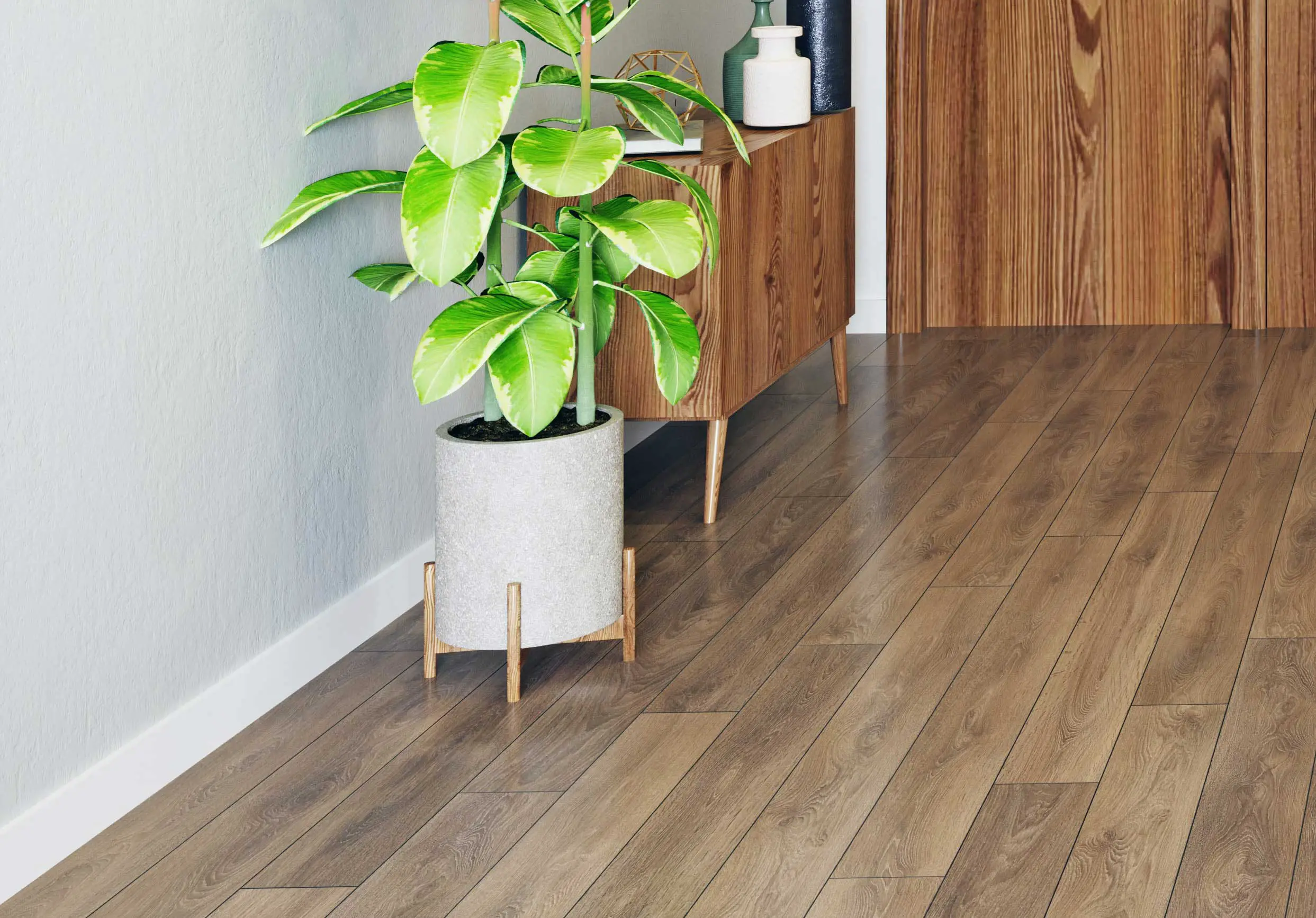 Flooring and Trim
Flooring and Trim
When it comes to choosing the right molding, it is important to consider the type of flooring you have. Different types of flooring require different types of molding. Additionally, there are several different types of floor trim that you can choose from to complement your flooring.
Types of Flooring
Flooring is available in a few different types, each with its unique benefits and challenges. The three primary types of flooring are hardwood, carpet, and tile.
Hardwood floors are a popular choice for homeowners seeking an elegant and timeless look. They are available in different species such as oak, maple, cherry, or walnut, among others. Hardwood floors require shoe molding or quarter round to cover the gap between the wall and the floor. This molding prevents debris from entering the space between the wall and floor while also providing an aesthetically pleasing finish that complements the overall ambiance of your living space.
Carpeted floors offer warmth, comfort, and sound insulation that other flooring options may not provide. Unlike hardwood floors that require molding to cover gaps between walls and floors, carpets have more height than wood and usually do not require molding. However, carpet installation requires tack strips around the perimeter of the room to hold it in place.
Tile floors are durable and easy to maintain; they come in various sizes, colors, shapes, textures and can mimic different materials like stone or wood. They typically require quarter round molding made of ceramic or porcelain material to cover gaps between walls and tiles. These moldings can be glazed or unglazed depending on your preference.
It’s worth noting that choosing the right type of flooring depends on several factors such as durability requirements, maintenance needs, aesthetic goals, budget considerations among others. Each type has its advantages and disadvantages; therefore careful consideration is necessary before making a decision.
Types of Floor Trim
There are many different types of floor trim available to homeowners. Baseboard molding, base shoe molding, and decorative molding are some of the most common types. Baseboard molding is the most common type of floor trim and is used to cover the gap between the floor and the wall but is usually finished with a strip along the bottom of baseboard with base shoe molding or quarter round. Decorative molding is used for aesthetic purposes and can add a touch of elegance to any room.
Baseboard Molding
Baseboard molding is a type of floor trim that is commonly used to cover the gap between the wall and floor and serves as the base molding. It comes in various sizes, typically ranging from 2 to 8 inches in height. Different materials can be used for baseboard molding, including wood, MDF (medium density fiberboard), PVC (polyvinyl chloride), or other composites.
Wooden baseboard moldings are popular because they are durable, easy to work with, and come in many different styles and finishes. They can be painted or stained to match any decor theme or color scheme you have in mind.
MDF baseboards are made from compressed wood fibers and resin, making them more affordable than solid wood options. They are also easier to install because they are lightweight and come pre-primed.
PVC baseboards are moisture-resistant and ideal for use in areas such as bathrooms or basements where water damage may be a concern. They are also low maintenance and easy to clean.
Other composite materials like polystyrene foam, polyurethane foam, or fiberglass-reinforced plastic (FRP) can also be used for baseboard molding depending on your specific needs.
Base Shoe Molding
Base shoe molding is used to finish the baseboard molding. It is specifically designed to cover gaps between the wall and the floor, particularly in areas where regular baseboard molding may not fit.
It’s a fantastic solution for covering small gaps and imperfections in your flooring. The sharp edge of this molding allows it to sit flush against the floor, creating a seamless transition between the wall and flooring surfaces.
As with the other types of molding discussed here, this type of molding is available in various materials such as wood, MDF, PVC, or other composites. Wooden base shoe moldings are popular because they are easy to work with and can be painted or stained to match any decor theme you have in mind.
MDF base shoe moldings are affordable and come pre-primed, making them easy to install. PVC base shoe moldings are moisture-resistant and ideal for use in areas like bathrooms or basements where water damage may be a concern.
Decorative Molding
Decorative molding is a type of trim that is used primarily for aesthetic purposes. It comes in various shapes, sizes, and materials like wood, MDF (medium-density fiberboard), and polyurethane. This molding can add elegance to any room by providing a decorative touch to walls, ceilings, doors or windows.
Decorative molding can be used to create unique designs on walls or ceilings, such as crown molding which adds a regal touch to a room. Baseboard molding with intricate details can also add an extra layer of sophistication to your living space.
It’s important to consider the type of flooring you have and the style of your home when choosing the right type of decorative molding. For example, if you have hardwood floors or tiles with intricate patterns, you may want to choose simpler molding that complements the flooring without overwhelming it.
Wooden decorative moldings are popular because they are durable and come in many different styles and finishes. They can be painted or stained to match any decor theme or color scheme you have in mind.
MDF decorative moldings are made from compressed wood fibers and resin, making them more affordable than solid wood options. They are also easier to install because they are lightweight and come pre-primed.
Polyurethane decorative moldings offer affordability while still maintaining excellent quality standards with their durability and resistance against moisture damage.
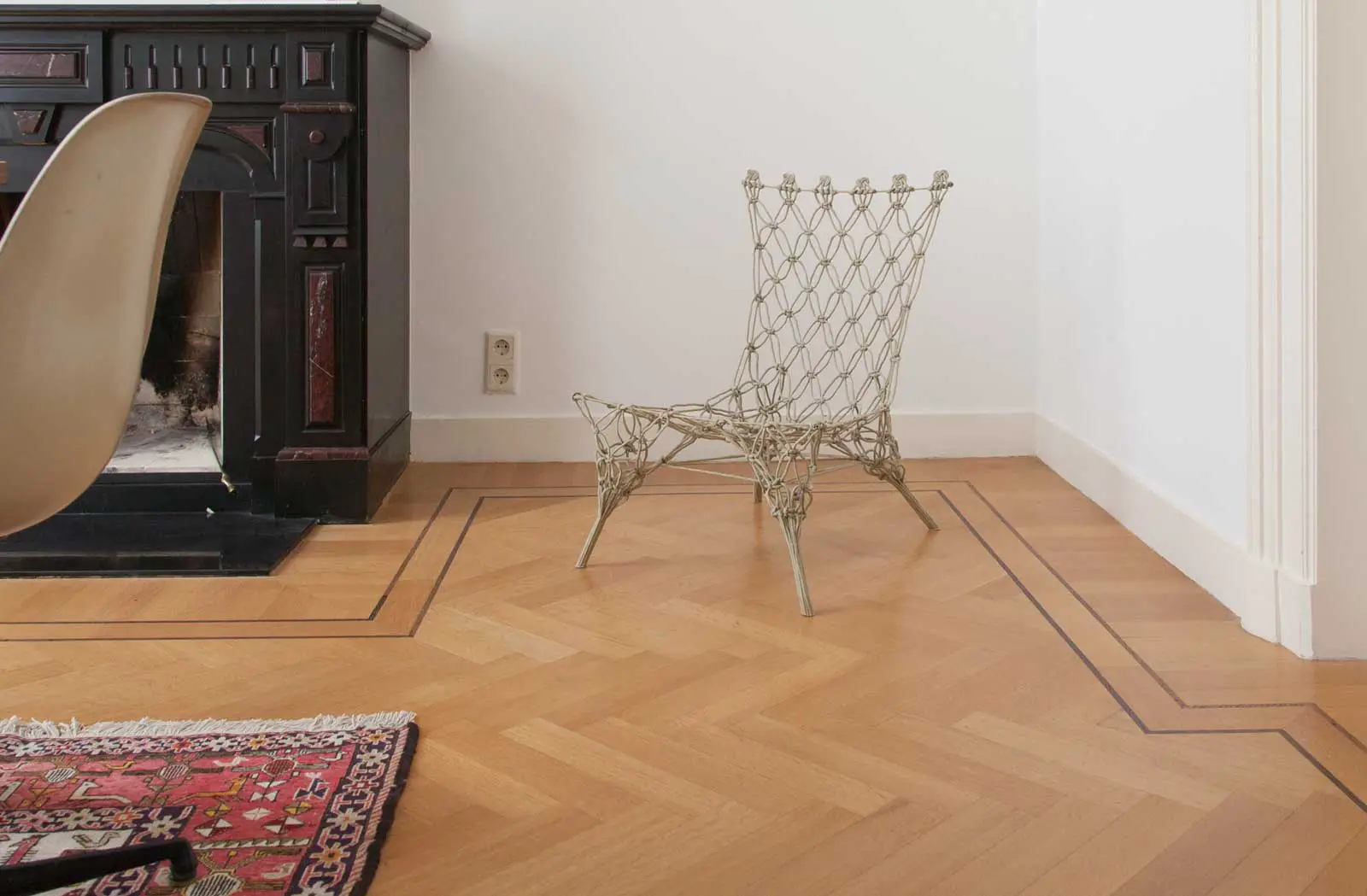 Angles and Transitions
Angles and Transitions
When it comes to installing shoe molding or quarter round molding, one of the most important factors to consider is the angles and transitions. Properly measuring and cutting these moldings at the correct angles can make all the difference in creating a clean and seamless look in your living space. Let’s talk about how to achieve a professional-looking finish for your flooring project.
Angles in Molding
When it comes to installing shoe molding and quarter round, angles are a critical aspect to consider.
Both types of molding have 90-degree angles on the backside, but their visible sides differ in shape. Quarter round has a curved shape resembling one-fourth of a circle and is best used for filling corners or softening any 90-degree joint between trim and molding. On the other hand, shoe molding is designed to run along the intersection of the baseboard and floor.
Proper measuring and cutting of these moldings at precise angles can make all the difference in achieving a professional look for your flooring project. A skilled trim carpenter will be able to assess the angles of your floors and walls to determine the appropriate angle for your shoe molding or quarter round.
Whether they’re working with inside corners on working on an outside corner, a trim carpenter will typically cut two pieces of molding at a 45-degree angle to create a seamless corner. But those aren’t the only angles they need to create, and this is where the genius of a professional trim carpenter really shows through.
Door frames can present another challenge when installing shoe molding or quarter round. In most cases, the molding will need to be cut to fit around the door frame to create a clean transition. Again, a skilled trim carpenter will be able to create a polished look by cutting the molding at a 45-degree angle and filling any nail holes or gaps.
That’s why it’s always a good idea to hire a pro to get that professional look and finish.
Transitions in Molding
Transitions are a crucial aspect when it comes to installing shoe molding and quarter round to help cover up any paintwork issues or flooring material gaps that may be visible.
Shoe molding, in particular, is an excellent option for filling small gaps between walls and floors. Its thin and flexible design allows it to bend and conform to the unevenness of the floor, creating a seamless transition between the two surfaces. On the other hand, quarter round molding is better suited for covering larger gaps.
Aside from its functional purpose, shoe molding can also add visual appeal to baseboards and walls. It comes in various styles and finishes, making it a versatile choice for any room decor. In contrast, quarter round molding is primarily focused on hiding flaws in a room’s construction.
It’s essential to choose the right type of molding based on your specific needs to achieve the desired result. Taking into account factors such as gap size, flexibility, and aesthetic appeal will help you make an informed decision when choosing between shoe molding vs. quarter round molding for your flooring project.
Tools, Nailing and Trim Pieces
When it comes to installing trim pieces, choosing the right tools and nails is essential for achieving a seamless finish. There are various types of tools that are used by a professional trim carpenter and specific kinds of nails and nail heads available, each with their own unique features and benefits. Let’s explore the different tools for nailing, types of nails, and trim pieces to help you make an informed decision for your next home renovation project.
| Tool | Purpose |
|---|---|
| Measuring tape | To measure the length of the molding |
| Pencil | To mark the cutting points on the molding |
| Miter Saw | To make precise cuts on the molding |
| Nail gun | To attach the molding to the wall or floor |
| Wood glue | To provide extra support and prolong the lifespan of the molding |
| Brad nailer | To handle small nails required for the job |
| Utility knife | For small trimming and clean-up |
Tools for Nailing
To properly install shoe molding or quarter round, you’re going to need a few essential tools. These include a measuring tape, pencil, saw, nail gun, and wood glue. A good saw is necessary to make precise cuts on the molding. A miter saw is really the best tool for the job because it will allow you to cut precise, accurate angles, quickly and easily. You’ll also want to use nail gun to attach the molding to either the wall or floor. Using a traditional hammer runs the risk of you easily damaging your trim pieces.
For installing shoe molding and quarter round molding, it’s best to use a brad nailer as it can handle small nails required for this job. It’s important to note that using a larger nail may crack the moldings or cause them to split. Additionally, applying wood glue along with nailing can provide extra support for the moldings and prolong their lifespan.
Nail Types
Selecting the appropriate nail is crucial when installing shoe molding or quarter round. Typically, brad nails are the preferred type for this type of trim work. These nails come in different sizes, but the 18-gauge brad nail is the most commonly used size.
It’s important to select a nail that is long enough to hold the molding securely in place but not too long that it will cause damage to the wood or create visible holes. Using a nail that is too short may result in an unstable and loose moldings while using a longer one may split or damage it. In addition, choosing a high-quality brad nail can prevent rusting and ensure longevity of your moldings.
Trim Pieces
Shoe molding and quarter round are commonly sold in 8-foot lengths and can be cut to the desired size using a saw. You have options when it comes to materials, including wood, medium-density fiberboard, polystyrene, and PVC.
Each material has its own unique advantages and disadvantages that should be considered based on your needs and preferences. For example, wood is durable but may require more maintenance than other materials while polystyrene is lightweight but may not provide as much durability as other materials.
When choosing moldings, you’ll also have a variety of colors and finishes to choose from to match your existing decor. For corners, mitered trim is used to ensure a seamless appearance. Additionally, a piece of return trim is often used at the end of a run of molding to provide an aesthetically pleasing finish.
Painting Trim
When it comes to painting your trim, choosing the right paint grade is crucial for achieving a professional finish. Factors such as paint quality and durability (especially important if you have pets!), gloss level, and coverage have to be taken into account when choosing a paint. Once you have chosen the appropriate paint, proper application techniques can make all the difference in ensuring a flawless and long-lasting result.
Choosing a Paint Grade
Selecting the appropriate paint grade is a critical first step when painting trim. For wooden trims, it’s important to choose a paint grade that is specifically designed for use on wood surfaces. A high-quality paint grade will ensure proper adhesion and longevity of the paint.
If you’re not sure about which paint grade to select, get advice from a professional painter or home improvement expert. I’ve found that I can rely on them to keep me from making stupid mistakes with the wrong types of paint for the various different projects I do, and I’ve found them absolutely invaluable. The people who work the paint counter at Home Depot and Lowe’s are very knowledgeable and can provide valuable insights into which paint grades are suitable for your specific type of trim and help you choose the best option for your project.
 Applying Paint To Shoe Molding & Quarter Round Trim
Applying Paint To Shoe Molding & Quarter Round Trim
After selecting the appropriate paint grade, it’s time to proceed with painting your trim. Begin by preparing your workspace, ensuring that it is clean and free of any debris that could interfere with adhesion or result in an uneven finish.
Next, use a high-quality paintbrush to apply a thin layer of paint to your trim. It’s essential to apply the paint evenly, taking care not to leave behind any brush strokes or roller marks that could detract from the final result.
Another great option is to use a paint sprayer to apply the paint. Using a paint sprayer is faster and can result in a smoother finish than using a paintbrush.
I’ve found that rollers aren’t really as practical for use on this kind of molding just because of their position on the wall, and the size of the rollers. They really just don’t work well in these places.
Shoe molding and quarter-round trim are popular choices for hardwood floors, providing excellent options for creating smooth transitions between different surfaces and base.
Allow the first coat to dry thoroughly before applying a second coat for added durability and coverage. If needed, consider adding a third coat for complete coverage.
Once you’ve finished painting, it’s crucial to allow the paint ample time to dry completely before touching or handling the trim. This will prevent smudging or damage to the freshly painted surface. By following these steps carefully and using high-quality materials, you can achieve a professional-looking finish on your trim that will last for years to come.
Next Steps
Want to join others who are creating the most amazing home redesigns & renovations and get more tips, tricks and hacks on how to make your home the best it can be?
Join my brand new free private Facebook group, Remodel Reality to connect with other people like you to make your space the best!
